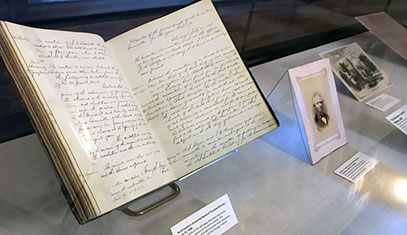The Sister-School Model
 Just because women were admitted to Northwestern did not yet mean they were “on the same terms and conditions” as men. The University did admit three women during the 1869-1870 academic year, but it was in no rush to recruit more until it could figure out exactly how to administer women in this new setting. President Haven’s vision was not of one campus where the two sexes commingled, but something closer to the “coordinate model” — a sister school, considered a “department” of the University. Under this plan, women would be situated in a separate building, under separate supervision (by women faculty). “In this way,” Haven said in his inaugural speech, “the inconvenience and evils which many dread may be avoided.”
Just because women were admitted to Northwestern did not yet mean they were “on the same terms and conditions” as men. The University did admit three women during the 1869-1870 academic year, but it was in no rush to recruit more until it could figure out exactly how to administer women in this new setting. President Haven’s vision was not of one campus where the two sexes commingled, but something closer to the “coordinate model” — a sister school, considered a “department” of the University. Under this plan, women would be situated in a separate building, under separate supervision (by women faculty). “In this way,” Haven said in his inaugural speech, “the inconvenience and evils which many dread may be avoided.”
Conveniently enough, a solution to the dilemma was soon found in a project that had been percolating among Evanston women for years, well before Haven’s arrival — the Evanston College for Ladies, intended as a separate collegiate institution for women that would allow them full access to Northwestern classes and offer a college degree.
This suited Haven, as it provided a solution to the complex logistics of coeducation: a separate institution that could be perceived as part of Northwestern. This coordinate model might have resulted in a very different history for women at Northwestern if not for the most famous tragedy in Chicago history.